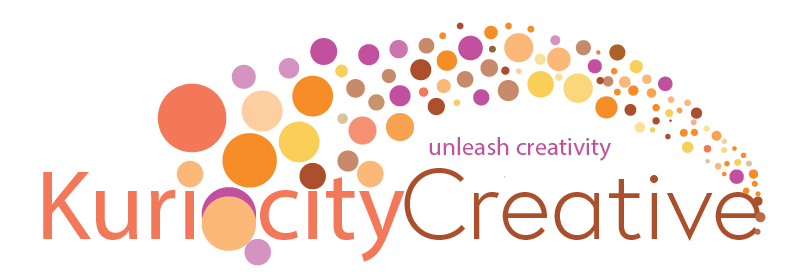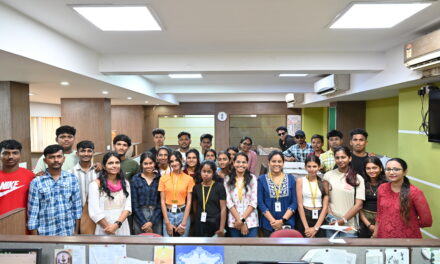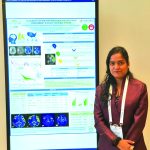PhD scholar Tancia Pires recently showcased an innovative MRI technique for faster and quantitative stroke diagnosis at the 17th World Stroke Congress 2025 in Barcelona, Spain
RAMANDEEP KAUR | NT KURIOCITY
When Tancia Pires submitted her abstract for the 17th World Stroke Congress (WSC) 2025, she had modest expectations. “I was in the early phase of my PhD and had limited data from around 50 patients but my mentors encouraged me to submit my abstract and I thought, why not give it a try?” recalls Pires, now a second-year PhD scholar in Medical Imaging Technology at the Manipal College of Health Professions, MAHE, Manipal. To her surprise, she was selected to present her study in the e-poster highlight category.
The WSC, held annually in October, attracts leading neurologists, scientists and researchers from across the globe. Its sessions offer a comprehensive view of cutting-edge developments in stroke prevention, diagnosis and treatment.
During the event, Pires attended sessions relevant to her work, including neuroimaging, artificial intelligence and diagnostic innovations, gaining perspective on global approaches to stroke care. She was particularly intrigued by the integration of artificial intelligence, virtual reality and portable MRI and CT scanners, which can be used at a patient’s bedside for rapid imaging. “While such portable devices are slowly being introduced in India, they have the potential to transform acute stroke management,” she says.
Stroke, she explains, is among the major causes of death and long-term disability worldwide. “Of the two main types, hemorrhagic and ischemic, ischemic strokes account for nearly 80% of cases. Rapid intervention is crucial because every minute counts. Treatment must occur within a narrow golden hour to prevent permanent brain damage,” she explains.
Her research addresses this challenge by improving early diagnosis. “Traditional MRI techniques rely heavily on subjective interpretation to identify stroke lesions.” Pires’ study focuses on a new MRI sequence that is faster, provides quantitative data and helps distinguish brain tissue that can still be salvaged. “In acute ischemic stroke, time is brain. Thousands of neurons die every minute. My goal is to provide research-based evidence for a faster and more objective imaging method that can guide treatment decisions and perhaps reduce long-term disability,” she says.
So far, Pires’ findings show that the new MRI sequence generates colour-coded, quantitative maps of the brain, differentiating between dead tissue and areas that remain viable. “Identifying even small regions of salvageable tissue early can significantly influence patient recovery and quality of life,” she says.
Presenting her research at the WSC was both challenging and rewarding. “Many applicants were not accepted or were only included in the viewing category. Being selected in the e-poster highlight category allowed me to explain my work directly to experts,” she recalls.
The response to her presentation was encouraging, with a few Indian scientists from the diaspora expressing pride in her contribution to stroke research and motivating her to continue her work.
Interactions with researchers from pharmaceuticals, neurology, geriatrics and medical imaging provided fresh perspective. While many studies focused on CT imaging, Pires received suggestions for applying AI and deep learning to her MRI data, opening new avenues for her research. “These discussions demonstrated how interdisciplinary collaboration can advance stroke diagnostics,” she says.
Her journey to the event was supported by the Indian Council of Medical Research (ICMR), which offered a travel grant. The application process required detailed documentation, including the novelty of her research, its potential impact, her CV, previous presentations and published work. “Receiving ICMR’s backing was a significant boost and added credibility to my study,” notes Pires.
Beyond technical knowledge, the WSC gave a chance to observe how stroke awareness and prevention are prioritised internationally. Programmes abroad focus on rapid recognition of stroke symptoms, often involving schoolchildren to educate families. “In India, awareness is limited. Many people are unaware that treatments like thrombolysis and even mechanical thrombectomy are available free of cost at government institutions such as Goa Medical College, Bambolim. Public education on stroke management needs to improve,” she emphasises.
Her advice to young researchers is never to underestimate their work. “Even a small study can have a global impact if done sincerely.
Looking ahead, Pires plans to expand her study by including more patient data and completing the remaining phases of her PhD. “I still have a long way to go but my goal is to contribute to stroke diagnosis and improve patient outcomes,” she says.
Pires also hopes to combine her passion for research and teaching. “I have always wanted to be a teacher. With my background in healthcare and research, I hope to inspire others while continuing to make a difference in the medical and academic community,” she says.









